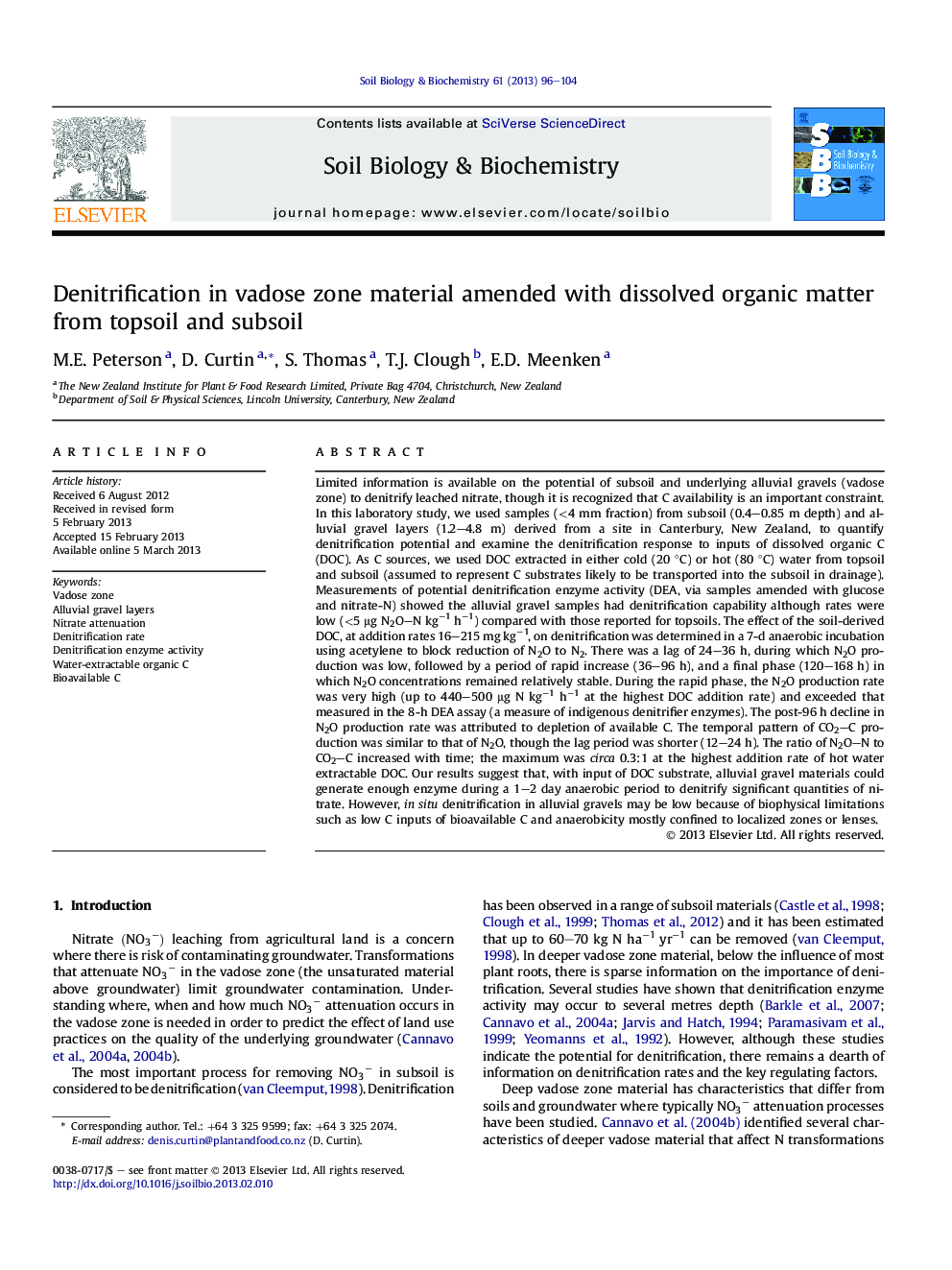| کد مقاله | کد نشریه | سال انتشار | مقاله انگلیسی | نسخه تمام متن |
|---|---|---|---|---|
| 2024794 | 1542623 | 2013 | 9 صفحه PDF | دانلود رایگان |

Limited information is available on the potential of subsoil and underlying alluvial gravels (vadose zone) to denitrify leached nitrate, though it is recognized that C availability is an important constraint. In this laboratory study, we used samples (<4 mm fraction) from subsoil (0.4–0.85 m depth) and alluvial gravel layers (1.2–4.8 m) derived from a site in Canterbury, New Zealand, to quantify denitrification potential and examine the denitrification response to inputs of dissolved organic C (DOC). As C sources, we used DOC extracted in either cold (20 °C) or hot (80 °C) water from topsoil and subsoil (assumed to represent C substrates likely to be transported into the subsoil in drainage). Measurements of potential denitrification enzyme activity (DEA, via samples amended with glucose and nitrate-N) showed the alluvial gravel samples had denitrification capability although rates were low (<5 μg N2O–N kg−1 h−1) compared with those reported for topsoils. The effect of the soil-derived DOC, at addition rates 16–215 mg kg−1, on denitrification was determined in a 7-d anaerobic incubation using acetylene to block reduction of N2O to N2. There was a lag of 24–36 h, during which N2O production was low, followed by a period of rapid increase (36–96 h), and a final phase (120–168 h) in which N2O concentrations remained relatively stable. During the rapid phase, the N2O production rate was very high (up to 440–500 μg N kg−1 h−1 at the highest DOC addition rate) and exceeded that measured in the 8-h DEA assay (a measure of indigenous denitrifier enzymes). The post-96 h decline in N2O production rate was attributed to depletion of available C. The temporal pattern of CO2–C production was similar to that of N2O, though the lag period was shorter (12–24 h). The ratio of N2O–N to CO2–C increased with time; the maximum was circa 0.3:1 at the highest addition rate of hot water extractable DOC. Our results suggest that, with input of DOC substrate, alluvial gravel materials could generate enough enzyme during a 1–2 day anaerobic period to denitrify significant quantities of nitrate. However, in situ denitrification in alluvial gravels may be low because of biophysical limitations such as low C inputs of bioavailable C and anaerobicity mostly confined to localized zones or lenses.
► Denitrification potential of subsoil and the underlying gravel layers was measured.
► Indigenous denitrification enzyme levels were low in these layers.
► Enzyme production in deep layers was induced by anaerobic incubation (48 h, 20 °C).
► Topsoil DOC was an effective substrate for denitrification in subsoil layers.
► Denitrification rate peaked at 440–500 μg N kg−1 soil h−1 after input of DOC.
Journal: Soil Biology and Biochemistry - Volume 61, June 2013, Pages 96–104